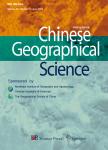Modeling Hydrothermal Transfer Processes in Permafrost Regions of Qinghai-Tibet Plateau in China
Modeling Hydrothermal Transfer Processes in Permafrost Regions of Qinghai-Tibet Plateau in China作者机构:Cryosphere Research Station on Qinghai-Xizang Plateau State Key Laboratory of Cryospheric Sciences Cold and Arid Regions Environmental and Engineering Research Institute Chinese Academy of Sciences
出 版 物:《Chinese Geographical Science》 (中国地理科学(英文版))
年 卷 期:2015年第25卷第6期
页 面:713-727页
核心收录:
学科分类:0303[法学-社会学] 07[理学] 0708[理学-地球物理学] 0705[理学-地理学] 070501[理学-自然地理学] 0813[工学-建筑学] 0704[理学-天文学] 0833[工学-城乡规划学]
基 金:National Major Scientific Project of China(No.2013CBA01803) Science Fund for Creative Research Groups of National Natural Science Foundation of China(No.41121001) National Natural Science Foundation of China(No.41271081) Foundation of One Hundred Person Project of Chinese Academy of Sciences(No.51Y251571)
主 题:过程模拟 西藏高原 高原多年冻土区 土壤-植物-大气系统 CoupModel 青海 传热传质模型 垂直温度梯度
摘 要:Hydrothermal processes are key components in permafrost dynamics; these processes are integral to global warming. In this study the coupled heat and mass transfer model for(Coup Model) the soil-plant-atmosphere-system is applied in high-altitude permafrost regions and to model hydrothermal transfer processes in freeze-thaw cycles. Measured meteorological forcing and soil and vegetation properties are used in the Coup Model for the period from January 1, 2009 to December 31, 2012 at the Tanggula observation site in the Qinghai-Tibet Plateau. A 24-h time step is used in the model simulation. The results show that the simulated soil temperature and water content, as well as the frozen depth compare well with the measured data. The coefficient of determination(R2) is 0.97 for the mean soil temperature and 0.73 for the mean soil water content, respectively. The simulated soil heat flux at a depth of 0–20 cm is also consistent with the monitored data. An analysis is performed on the simulated hydrothermal transfer processes from the deep soil layer to the upper one during the freezing and thawing period. At the beginning of the freezing period, the water in the deep soil layer moves upward to the freezing front and releases heat during the freezing process. When the soil layer is completely frozen, there are no vertical water exchanges between the soil layers, and the heat exchange process is controlled by the vertical soil temperature gradient. During the thawing period, the downward heat process becomes more active due to increased incoming shortwave radiation at the ground surface. The melt water is quickly dissolved in the soil, and the soil water movement only changes in the shallow soil layer. Subsequently, the model was used to provide an evaluation of the potential response of the active layer to different scenarios of initial water content and climate warming at the Tanggula site. The results reveal that the soil water content and the organic layer provide protection against active layer deepening in summer, so climate warming will cause the permafrost active layer to become deeper and permafrost degradation.



